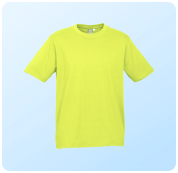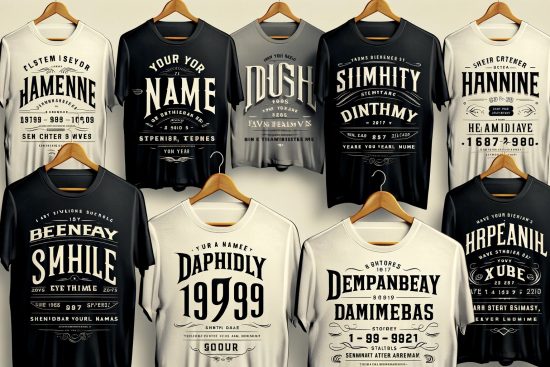
|
Getting your Trinity Audio player ready...
|
Look at the history of polo shirt and what to look for when buying for yourself.
The infamous polo shirt can be considered the hybrid of shirts, that falls somewhere in between the formal shirts and the T-shirt. Different types of polo shirts can be spotted in different fields of life. However, it is a misnomer and its genesis can be dated back to tennis.
The Origin of the Polo Shirt
In the early 20th century, Rene Lacoste, a tennis player, realised that he wasn’t able to deliver his best tennis performance when wearing the typical long sleeve shirt and tie. So, he decided to design his own shirt and wear it to competitions and games. The design he wore to the 1926 US open championship is the original model from which the polo shirts of today hail from. In 1933, Rene’s Chemise Lacoste company came into being, and it started marketing and selling these shirts in North America and Europe with the famous crocodile as its logo. The Lacoste polo shirt was then adopted by professional polo players soon after, and it became universally known and related to this sport.
More Brands With Polo Shirts
The connection between tennis and polo shirts was further cemented when the lifestyle brand Ralph Lauren came up with its ‘Sport of Kings’ clothing line with the ‘polo shirt’ as a centrepiece in the early 70s.
While in the UK the Fred Perry’s polo shirt became a favourite of the young population during the 60s because of the ‘Mod’ movement. And then in the 70s it became popular with the football hooligans, Skinheads and Northen, and rude boys. The Brit Poppers made it popular in the early 90s.
It is safe to say that the polo shirt is the perfect example of the influence of accidental or deliberate branding. You get a different message from each brand. For instance, on one hand, you get the aspirational message of Lacoste with its rich, privileged, and preppy subtext and, on the other hand, there is Fred Perry’s message that was shaped by a large group of like like-minded people who created a tribe and a sense of identity via clothes.
At the end of the day, no matter what message you find yourself leaning towards, you are wearing the polo .
Read More: 15 Funny Slogans to Make Your T-Shirts Awesome
What Are Polo Shirts Made Of?
Polo shirts are usually made using knitted cloth instead of woven. The pique weave is typically related to the polTitleo shirt because it gives the shirt its depth and texture. Piques can be created in different patterns including honeycomb, cord, waffle, and birds eye. This method of construction offers an ‘aerated’ weave that lets the wearer of the shirt feel comfortable even in warmer weather or when generating their own heat.
Now, if you look at polo shirts, pique is not the only weave used to make them. Even golfers have made polo shirts their signature uniform, but they prefer jersey or woven fabrics that boast a softer flatter weave. They have combined the blend to include more man-made fabrics that have more elasticity like elastane and polyester. These cotton or other blends offer more moisture management and mobility. Polo shirts for golf normally have 3 to 4 buttons on a lower reaching placket paired with a double layer collar as compared to the ribbed single layer collar seen in a pique polo shirt. The golf polo shirts appear smarter and have more versatility when it comes to decoration, such as screen printing or embroidery.
These man-made cotton or fibre weaves provide a smarter, harder wearing, and hotter washing substitute for the T-shirt. Workwear environments oftentimes expose their workers to oily substances that need a more rigorous experience in the washing machine. Man-made fibres make it possible to wash them by offering this option.
Read More: Polyester vs Cotton vs Blends: Which One Is Better?
Price of a Polo Shirt
The price of a polo shirt varies with the detail in tailoring, weight of the fabric, and the composition of the weave. So, a lighter weight polo shirt can fall in the 185 gsm range while you can expect to find a mid-range shirt in the 200-215 gsm range. A heavier polo shirt falls in the 230+ gsm range.
What To Look For in a Polo Shirt?
One of the key elements you need to look for when buying a polo shirt is the way its arms are constructed. The majority of these shirts contain a knitted cuff on the sleeve which is very popular with a lot of people, but you may find it uncomfortable because the cuff grips the bicep and so it may cause the sleeves to ride up your arm. Hence, if you are not looking for that, a cuff-less polo shirt may suit you more. You can also get your shirts specifically designed for sportswear or workwear. Furthermore, wholesale brands have also introduced poly/cotton and cotton fabrics for polo shirts in contrasting colours for team wear.
And if you want to go all out with sporty polo shirts, then you can choose from an array of options in technical moisture-wicking fabrics.
Read More: T Shirt Designing Mistakes You Must Avoid!
Is Polyester a Good Choice?
Polyester is also a widely used choice when it comes to sports fabric. It has quite peculiar characteristics, including the fact that it can stop the wind chill but still feel cooler in warmer temperatures. It can also absorb perspiration and move it away from your body to the outside of your shirt to help your dry more quickly. Besides, it is anti-biotic and lightweight. So, if you want a fabric will qualities similar to this, then polyester is a good choice for you.
Also Read: Does Polyester Shrink? Myths and Facts
Conclusion
So, to sum it up, we can say that the polo shirt hasn’t come a long way in terms of customisation and modification. It has maintained its original trademark design but still, there is something for everyone. So, if you can’t decide what to get for yourself, go for a polo shirt.
Image source: Shutterstock
Suggested Reads:




















